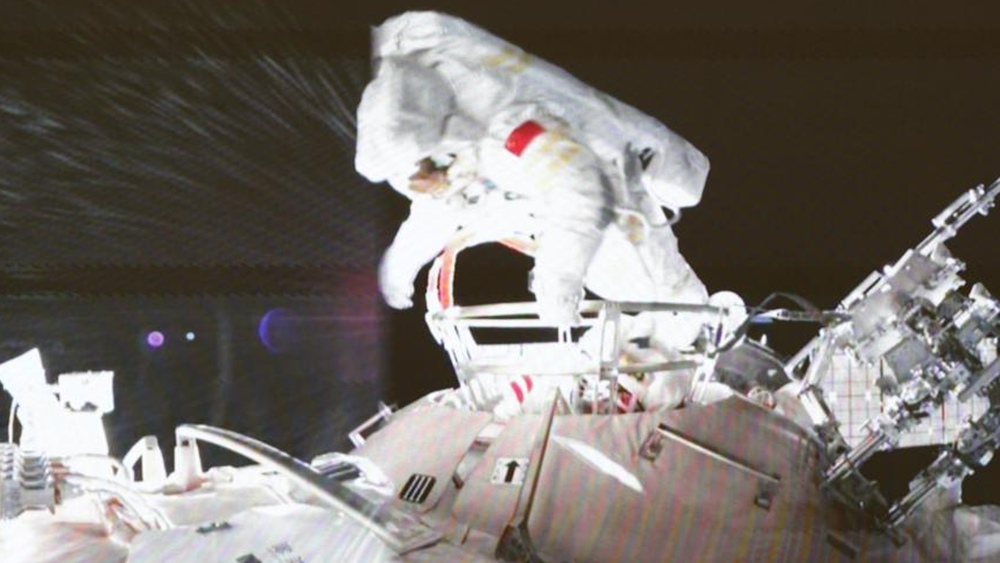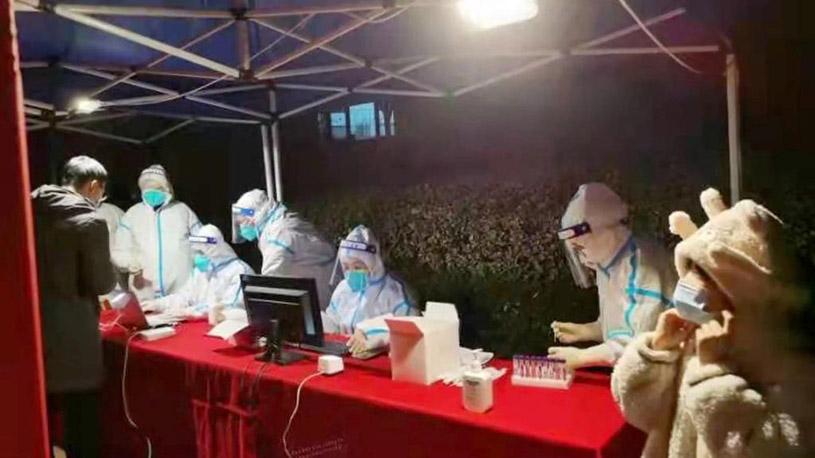BEIJING, Dec. 10 (Xinhua) -- Injured athletes at the Beijing Winter Olympic Games don't need to worry about the medical treatment as they might see the rescuing helicopter as fast as in four minutes after accidents.
With an improved medical transport system that adapts to the characteristics of mountain areas, and strengthened equipments at hospitals around the competition venues, China's snow medical service is fully prepared for the upcoming Beijing Olympic and Paralympic Winter Games.
During a helicopter rescue drill in the Yanqing competition zone in March, it only took four minutes for the helicopter to arrive at the "wounded athlete" and then transferred the injured from the slope to a medical station for further treatment life support.
Although China started late on the professional medical care team on the snow, a team of "doctors on snow" with excellent treatment ability and snow mobility ability has been formed.
According to the International Ski Federation (FIS) Medical Guide, medical teams should include an event chief of medical and rescue services, ski patrol, trauma teams and team physicians. The guide requires the trauma teams to be Advance Cardiac or Advance Trauma Life Support qualified and be able to reach any critically injured athlete within four minutes maximum time limit.
In order to provide a sufficient medical and emergency care during the Beijing Games, more than 10 hospitals in Beijing and Hebei province have selected relevant clinical personnel since 2018 to form a medical care team, including experts from well-known departments.
Over the past few seasons, the doctors have received plenty of alpine skiing training and are now able to sprint to any corner of the course carrying medical equipments weighing up to 15 kilograms.
In addition to being able to get there quickly, the doctors also need to be able to deliver exactly what the injured ones need. Fu Yan, a member of the Intensive Care Department at Xiyuan Hospital of the China Academy of Chinese Medical Sciences, used the intubation procedure as an example to explain how hard it is to treat a patient on the snow.
"It's not that easy on the snow. You have to take off your gloves, kneel, lie on your stomach or even lie on your side," Fu explained. "And soon you can't feel your hands."
In order to intubate faster and more accurate, Fu practiced on the dummy until she developed muscle memory, which only takes her less than 10 seconds to do so now.
Besides the unusual weather conditions, the complex terrain of the ski resorts was once a big challenge for the doctors. Fu recalled how the coach picked all kinds of tricky and challenging spots to test them during the training.
"Do you find a flat place for injured athletes and wait until you have rested enough?" Fu repeated the coach's harsh words. It was under such strict requirements that the Chinese medical team grew up quickly and successfully did their job during the Beijing 2022 test events earlier this year.
"There may be accidents during the race, but there must be no accidents in medical care," Sun Xu, a ski doctor, said.
The FIS Medical Guide also emphasize "Load and Go," the core essence of which is to save life and limb with transport to a medical facility as soon as possible, with the extent of interventions varying depending on the location of the incident, as well as availability of medical support and transport capacity.
Senior doctor at the Hebei Province People's Hospital and Medical Director at the Genting Snow Park, Wang Tianjun introduced that 14 fixed medical stations and 29 FOP (field of play) stations were set up during the testing events in November and December last year, as well as a rescue network including medical helicopters and ambulances in case of emergencies.
As it states in the FIS Medical Guide, the health and safety of all those involved in a FIS competition is a primary concern of all events organizers. With Beijing 2022 less than two months away, hospitals in Zhangjiakou City and Yanqing District are ready for medical service during the Games. Enditem









